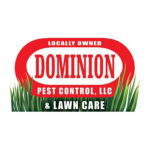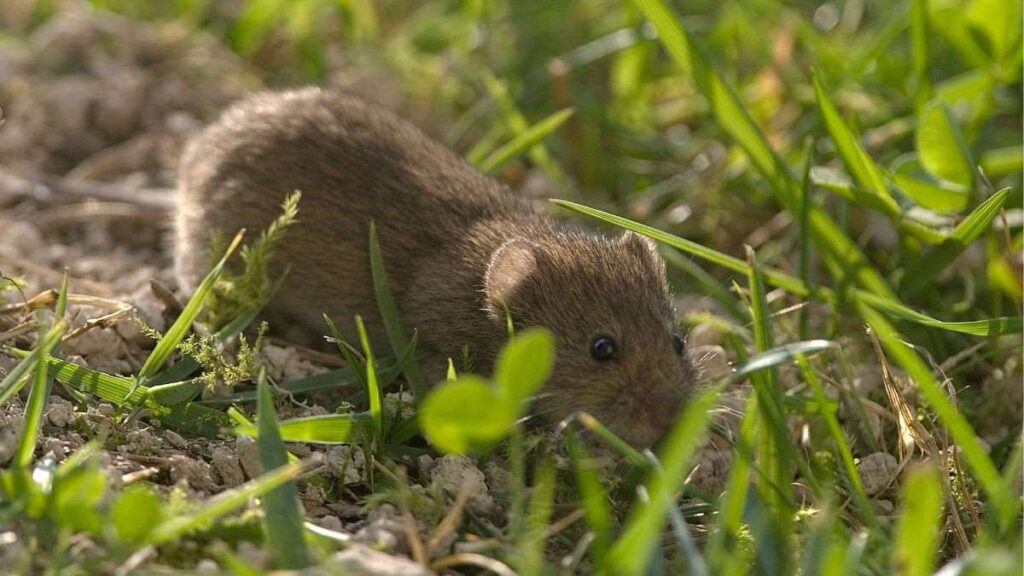If you’ve noticed small tunnels crisscrossing your lawn or garden, you could be dealing with voles. Voles might seem like harmless, tiny rodents, but for homeowners, gardeners, and farmers, they can cause significant damage to lawns, gardens, and crops.
These tiny rodents can cause major headaches for property managers, especially when they start chewing through plants and roots. Understanding what voles are, the types found in Central Pennsylvania, and effective strategies to get rid of voles, is essential for maintaining a healthy and beautiful landscape.
VOLES: WHAT THEY ARE
Voles, often referred to as meadow mice or field mice, are small, burrowing rodents closely related to lemmings and muskrats. They are typically 4-9 inches long with rounded bodies, short legs, and tails that are less than half their body length. Voles are herbivorous, feeding mainly on plants, roots, tubers, seeds, and grasses, and are active year-round.
HOW DO VOLES DIFFER FROM MOLES?
Many people confuse voles with moles, but they’re actually quite different. Moles are insectivores, meaning they mainly eat grubs, earthworms, and other insects found underground. Their tunnels are deeper, and they leave noticeable mounds of dirt at the surface as they dig. Moles aren’t as interested in your plants; they’re after the bugs in your soil.
Voles, on the other hand, are herbivores. They primarily feed on the roots of plants, bulbs, and the bark of trees and shrubs. Their damage is more visible above ground, with trails and gnaw marks, while moles usually work silently below the surface. Understanding this difference is key when figuring out how to control the problem effectively.
TYPES OF VOLES FOUND IN CENTRAL PENNSYLVANIA
In Central Pennsylvania, the two most common types of voles are:
Meadow Vole (Microtus pennsylvanicus)
Description: Small rodents, meadow voles grow between 5 and 8 inches in length. Their tails are almost half as long as their bodies and they’re covered in dense gray or brown fur often mixed with black and red. Also known as the meadow mouse.
Habitat: Moist environments with dense ground cover. Signs of vole damage include bark stripped from the base of trees or damaged bulbs, seeds, and tubers.
Pine Vole (Microtus pinetorum)
Description: Pine voles (also called woodland voles) are chunky rodents with chestnut-brown fur, and grow between 4 and 5 inches long, weighing little more than an ounce.
Habitat: The pine voles’ preferred habitats include orchards, fallow fields, farms, and hardwood forests with dense leaf litter. Unlike the meadow vole, the pine vole prefers underground habitats and feeds on roots and bulbs.
WHY A VOLE INFESTATION IS BAD
What Voles Do
Voles create extensive burrow systems just beneath the ground, which can be destructive to plants, crops, and trees. Since they reproduce quickly, their populations can grow rapidly if not controlled.
Why Voles Are Considered Pests
Damage to Lawns and Gardens: Voles chew on plant roots, leading to yellowed, dying vegetation. Their shallow burrows create unsightly runways across lawns.
Tree and Shrub Damage: They gnaw on tree bark and roots, especially in winter, which can girdle and kill young trees and shrubs.
Agricultural Impact: Voles can destroy crops by feeding on roots and lower plant stems, particularly grains, root vegetables, and bulbs.
HOW TO IDENTIFY WHEN YOU HAVE VOLES
Identifying a vole infestation is crucial to addressing it promptly. Here are some signs you might have voles in your yard:
Runways and Burrows: Look for 1-2 inch wide runways in the grass and small, round burrow openings.
Damaged Vegetation: Check for chewed plant stems, roots, and bark, especially near the ground.
Droppings: Vole droppings are small, dark, and pellet-like.
HOW TO GET RID OF VOLES
Habitat Modification
- Mow Lawns Regularly: Remove dense vegetation where voles like to hide.
- Clear Brush and Debris: Keep areas near gardens or homes free of brush and debris to reduce vole cover.
- Eliminate Mulch Near Tree Trunks: Voles often hide under thick mulch; removing it can discourage them.
Barriers
- Wire Mesh or Hardware Cloth: Bury mesh at least 6-10 inches deep around garden beds or young trees to prevent voles from accessing roots and trunks.
- Raised Garden Beds: Install raised beds with mesh linings to protect roots from burrowing.
Trapping
- Snap Traps: Use traps designed for mice near burrow entrances or along vole runways. Bait traps with peanut butter or small pieces of apple.
Vole Baits and Rodenticides
- Rodenticides: Some specifically target voles, though use them with caution to avoid harming non-target animals. Always follow local guidelines and regulations, and labels.
Repellents
- Commercial Repellents: Products with all natural ingredients can be applied to gardens and lawns to make the area unattractive to voles.
Natural Predators
- Encourage Predators: Owls, hawks, snakes, and even outdoor cats can help control vole populations naturally.
PREVENTING FUTURE INFESTATIONS: HOW TO KEEP VOLES AWAY
Once you’ve gotten rid of the voles, the next challenge is keeping them from returning. One of the best preventive measures is to reduce the food and shelter available to them. Keep your grass mowed short, especially near trees and shrubs, and remove any thick vegetation or piles of leaves where voles might hide.
Another preventive tactic is to install barriers. If you’re planting bulbs or young trees, consider placing wire mesh around the roots to protect them from vole damage. You can also create underground fencing by burying hardware cloth a few inches below the soil to block voles from entering certain areas of your yard. By making your yard less inviting, you’ll reduce the chances of a repeat infestation.
Maintain Your Yard: Regularly mow the lawn and trim vegetation to deter voles.
Remove Food Sources: Keep bird feeders and pet food off the ground to avoid attracting voles.
Install Barriers: Use wire mesh around vulnerable plants and trees.
Consider Raised Beds: Raised garden beds with mesh linings can protect root systems.
Use Repellents: Apply vole repellents periodically, especially in areas prone to infestation.
Voles may be small, but their impact on your yard can be significant. By understanding the types of voles found in Central Pennsylvania, recognizing the signs of an infestation, and implementing effective vole control strategies, you can protect your property from these destructive pests.
PROFESSIONAL VOLE EXTERMINATION
If you’ve tried various strategies without success or if your vole infestation is widespread or persistent, consider hiring a professional pest control service like Dominion. We know how to get rid of voles, and we have the knowledge, experience, and specialized tools to safely and effectively eliminate moles and other pests from your property.
How To Get Rid of Voles Naturally
At Dominion Pest Control, we specialize in lawn pest control. Our team of professional exterminators will conduct a thorough inspection to identify the extent of the infestation and determine the best course of action to get rid of the voles. We have developed a very effective repelling service that makes use of safe, natural products that we use to rid your property of voles for good. Using all-natural products proven to discourage nuisance wildlife, Dominion can help to keep these critters on the move. These products are entirely non-toxic and completely safe when used according to the label. Through our use of targeted treatments and natural preventative measures, we can help you ensure that your yard and garden remain vole-free.
Start a Treatment Plan
Ready to live vole-free? Call us today at (717) 393-7879 or contact us here to get started.
We serve Lancaster County (Lititz, Lancaster city, Manheim, Ephrata, Strasburg, etc), York County (Dallastown, Red Lion, York city, Hellam, etc), and Hershey, as well as Cumberland, Chester, Lebanon, and Perry County.

